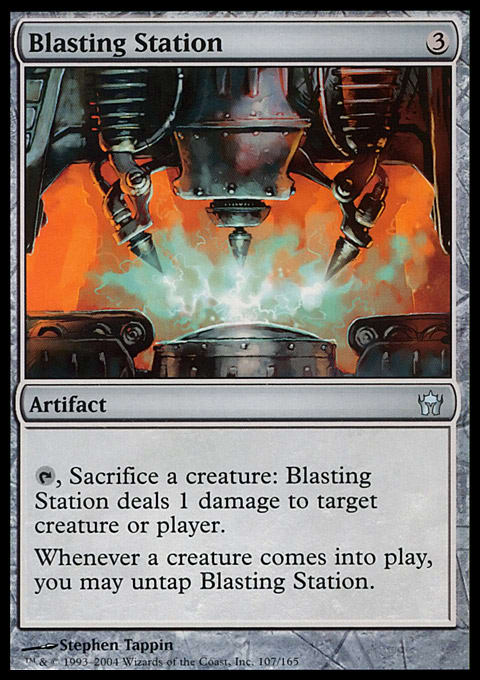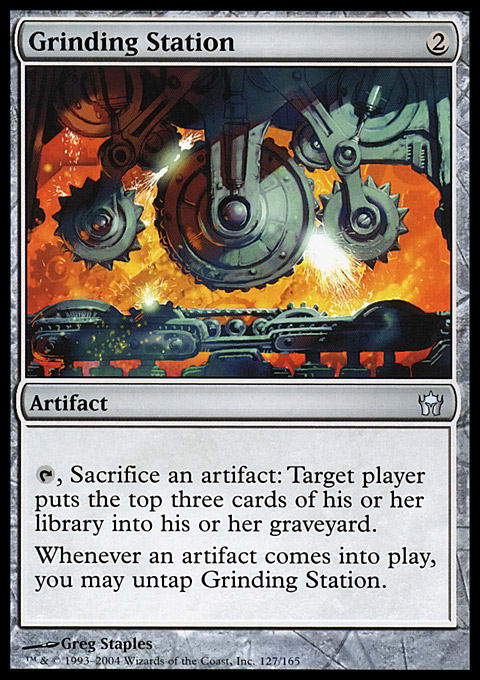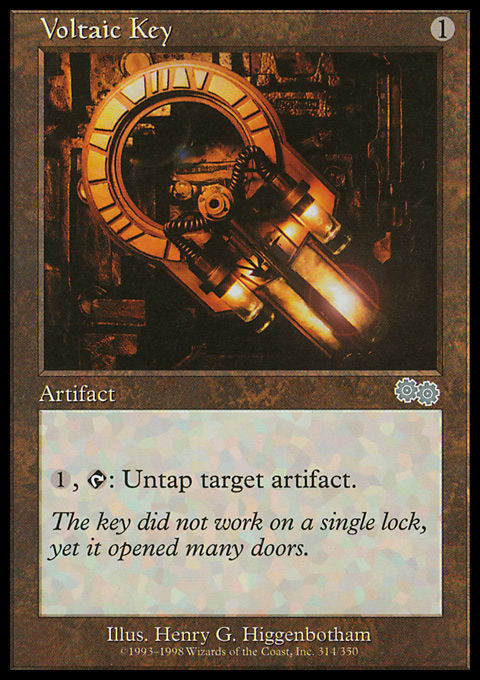At the end of last week’s article, there was a poll asking you all what sort of Magic design content you were interested in, and you overwhelmingly replied that you wanted to see . . . both broader game design pieces and a simulation of creating an actual set. (If you didn’t get a chance to vote last week, don’t worry. I’ll be looking over the results again later on, so make your voice heard!)
Ever one to appease the readership, I have a compromise for you—at least for this week.

Below, you’ll find interspersed sections describing the various niches that mythic rares need to fill and examples of how one might fulfill those needs in a theoretical Magic 2014 core set.
Word from on High
It would be laughable to start a discussion of the mythic rare role without looking at the criteria laid out by Mark Rosewater, Magic’s head designer. So as much as I’d like to make you laugh, here it is in a nutshell: “Every mythic rare has to have the potential to be awesome.” They’re not utility cards like Rampant Growth or Doom Blade; mythic rares are straightforward, they can create epic moments, and most importantly, they’re cards that the players want.

Kamahl's Desire by Dave Dorman
But Magic is a multifaceted game that we each play for different reasons, and thus, no card can excite every player. Not only do Timmies, Johnnies, and Spikes want different things from the game, each psychographic has numerous subcategories, each of which pursues that goal a little bit differently. In a perfect world, every player would be intrigued by at least one mythic from each new set, but in reality, some sections of the gamut are easier to run than others.
Resonant Frequencies
One of the more easily accessible areas of mythic design lies in making cards feel awesome by portraying a flavor concept that’s inherently exciting. Demons, Dragons, and Angels are awesome, and as long as the card in question does a good job of feeling like the species it represents, there’s a good chance it would make a plausible mythic.
But not all of Magic’s iconic creatures have such an easy time of things. Sphinxes and Hydras can feel awesome, but conveying the concepts of posing riddles and growing heads has proved significantly harder than the concepts of making dark deals, breathing fire, and embodying virtue. As such the cards end up with more text, and all the time spent parsing what they do detracts from the cards’ ability to evoke their flavorful concepts.
 |
There’s no easy solution to this problem—even if we do find a few clean and evocative designs, we’ll run out eventually, and then we’ll be back in the same conundrum. Nor have I seen many other options for iconic creatures to replace these two. Blue could revert to Djinns, in which case, simply having abilities function in sets of three might be enough to feel like getting wishes.
As for green, nothing really seems to fit, but luckily, the Hydra problem seems to be soluble. What I’m proposing is the equivalent of Shivan Dragon’s firebreathing ability for head-growing. Just like some Dragons (for instance, Balefire Dragon) represent breathing fire differently, we could still have different Hydras, but the majority of them could use the Rite of Passage ability to represent the Hydra trope. Yes, the timing of the ability is a bit complex, but provided we include reminder text, it might actually be a great way to educate players about the stack.
Action!
Now for some plausible Magic 2014 inclusions. Core sets mostly want to hit generic fantasy tropes, and while showing off Magic’s varied landscapes is also on the agenda, nonplaneswalker mythic rares aren’t really the place to do that; these cards need to be exciting to new players, too. That all means that our genie needs to grant you three wishes when you rub his lamp, and our Hydra needs to have a bunch of independently-acting heads that grow back when you cut them off:
 |
 |
Models on the Catwalk
Iconic creatures are great, but they’re not the only case where flavor drives a card to mythic. All planeswalkers and most legendary creatures, since the rarity’s introduction, have been stuck at mythic because they’re awesome characters (planeswalkers also receive the benefit of being entities of awesome power like Demons and Angels, but I’d say that’s less of a factor than players’ ability to identify with them).
I don’t have a whole lot to add on this front from a design perspective since the plotline is something of a separate element, but I will note the legends that have been printed as regular rares in recent years as prime examples as what should not be mythic. Thalia, Guardian of Thraben and Gwafa Hazid, Profiteer both have cool abilities, but neither feels epic.
I’ll also note that while planeswalkers almost always please the Vorthos crowd, they’re also usually appealing to Nuts & Bolts Spikes and Power Gamer Timmies: They offer you a lot of options to make difficult choices, and most of them have ultimate abilities that do something utterly ridiculous.
The Big Bad
Speaking of Power Gamer Timmies, I gladly include myself among their ranks, and as such, I’ve been struck by the proliferation of mythics aimed my way in recent sets.

Primal Surge by David Rapoza
Don’t get me wrong; I love putting my entire Commander deck onto the table, or swinging for over 300,000,000,000,000,000,000,000,000,000,000,000,000,000,000,000,000,000,000,000,000,000,000,000,000,000,000,000 damage with Chameleon Colossus, but there’s only so big an individual card can go. The awesome of today is eclipsing that of yesterday, and when Godsire doesn’t even seem impressive anymore, I know we’re going to run into a problem. We’ve heard about power creep and complexity creep, but right now, I fear Magic is in the throes of epicness creep, and quite frankly, I don’t want to see a future in which Emrakul, the Aeons Torn looks to Magic players like Hellkite Overlord looks to us now. “Yeah, that’s pretty big, I guess.”
Thankfully, in the middle of all this craziness (have you seen Omniscience?), there’s a ray of hope. Did the Chaos Reigns Planechase deck include Insurrection? No, we got Mass Mutiny instead; I’ll just hope that means somebody on the inside has noticed the same issue and is fighting against it . . . and not just that they wanted a version of the card that you can cascade into.
Moving right al—
Oh, what’s that? You wanted an epic spell in the epic-spell section? Maybe even one that could conceivably be in Magic 2014? Okay, since you asked so nicely:

That one’s from the Goblin Artisans’ Magic 2013: Goblin’s Lair project, you say? Why yes, yes it is. But it’s also awesome, and I wanted to show it to you. Okay, okay, here’s something new:

I mean, what good is one Blightsteel Colossus when you could have four? Just how many Scarecrows can you get along with your Reaper King? But this card secretly pleases another group, a group that will cast it to find these:
Or these:
Ultimate Potential
Mythic rares have the biggest Timmy categories covered, and Spikes have planeswalkers, which are both difficult to evaluate and difficult to play with, but designing mythics for Johnny is a much tougher task. Some Johnnies enjoy proving they can build a deck with One with Nothing, and some want to make Near-Death Experience good, but others don’t flock to strange cards at all. Many Johnnies express their creativity through overcoming self-imposed restrictions such as only playing with lands and artifacts.
When the very core of the psychographic lies in the individuals expressing their uniqueness, trying to get them all solving the same problem is more or less a lost cause. Does that mean Johnny appeal should be left to the lower rarities? Not at all, but the difficulty of designing good Johnny mythics explains the relative dearth of them compared to the other psychographics’ hoards.

Hoarding Dragon by Matt Cavotta
The easiest way to make Johnnies excited about a mythic is the method exercised above: Make a card that will appeal to some Johnnies as well as players of another psychographic. Prime examples include Abyssal Persecutor, Phyrexian Obliterator, and Drogskol Reaver.
But there is another way. Some engine cards are so open-ended that a wide variety of Johnnies can find different uses for them; every time I see one of these cards, I get giddy with excitement, and I can only assume others feel the same way. The world needs more cards like Havengul Lich and Mikaeus, the Unhallowed, but they’re incredibly hard to find. Dare I say it? I think this subset of mythics might be even harder to design than the average common.
That doesn’t mean I don’t have one for you, though. I used to spend a lot of time designing new commanders to play with, and it always irked me that Nacatl War-Pride’s ability wouldn’t work with all of the cool enters-the-battlefield, dies, and saboteur triggers I wanted. So, I made this:

And then along came Planechase 2012 with this spicy number:
This is certainly an effect with broad enough Johnny appeal to see print at mythic, and it has some Timmy credentials to boot! Of course, it does nothing in a two-player game, which probably precludes such a card’s inclusion in a core set, but something closer to the original War-Pride might be feasible:

A Rarity
For most of the time we’ve had mythic rares, these were really the only categories they fell into (okay, and also cards that shouldn’t have been mythic in the first place. I’m looking at you, Vengevine). But it seems that R&D has recently decided to occasionally cater to smaller portions of the player base.
Descent into Madness might appeal to a few diehard Johnnies, but the card is pretty clearly intended for Griefer Timmies, players who want nothing more than to slowly lock their opponents out of the game and watch them squirm. These players certainly exist, but from what little data I have (read: personal experience), they seem to be a much smaller group than the other sections of the player base that mythic rares have served.
Does this mean we’ll see a mythic targeted at Chaos enthusiasts or Adrenaline Timmies in the future? Only time will tell, but if so, I’ll be looking awfully stupid for arguing so fervently against a coin-flipping mythic rare during my stint on the Goblin Artisans team.
The Myth’s Moral
All cards need to appeal to somebody, but the fact that mythics hold the responsibility for getting people to open booster packs means that sitting down and thinking about whom each mythic is made for is among the best ways to gain an understanding of the player psychographics that R&D uses.
As for the roles of other rarities . . . well, I’ll get to that another time, assuming you found this column worthwhile. I may be unable to write anything next week since I’ll be out on the east coast, but if I don’t see you, you can expect me back the week after. In the meantime, I’ll leave you with a poll:
[poll id=166]






























